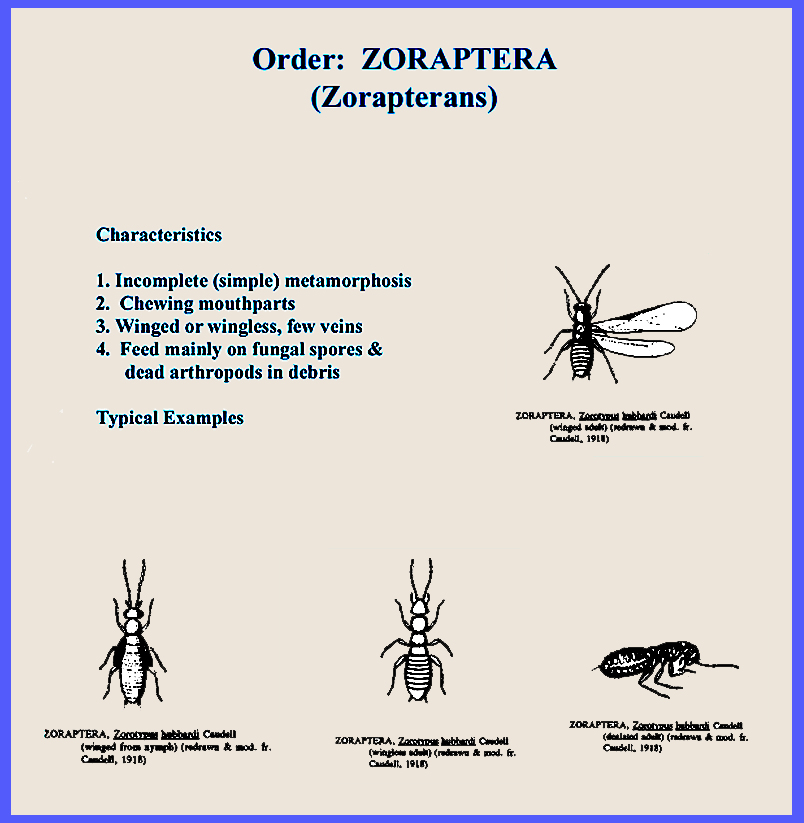File:
<zoraptera.htm> < (Entomology),
(Invertebrates), (General Index)> <Invertebrate Bibliography> <Glossary> <Site Description>
< Home>
|
Entomology: ZORAPTERA
1 Kingdom: Animalia, Phylum: Insecta: Zoraptera (Contact)
Please CLICK on underlined
categories to view and on included illustrations to enlarge: Depress Ctrl/F to search for subject matter:
All species of the Zoraptera are
tiny insects, winged or wingless, with nine-jointed moniliform antennae. Winged species hve compound eyes and
ocelli, but wingless species lack both.
They have chewing mouthparts.
The two pairs of wings have a reduced venation, and are capable of
being shed by basal fractures as in the Isoptera (termites). Metamorphosis is simple. Zoraptera are closely allied to the
Psocoptera. They have a wide distribution in
the warmer parts of world. They live in colonies and some caste differentiation
exists. An example is Zorotypus of
West Africa (Borradaile & Potts,
1958). They are found under piles of wood in
sawdust or under bark and in rotting logs.
They feed on fungal spores and small dead arthropods. ------------------------------------------- Details of Insect Taxonomic Groups Examples of beneficial species
occur in almost every insect order, and considerable information on
morphology and habits has been assembled.
Therefore, the principal groups of insect parasitoids and predators
provide details that refer to the entire class Insecta. These details are available at <taxnames.htm>. ============== |
